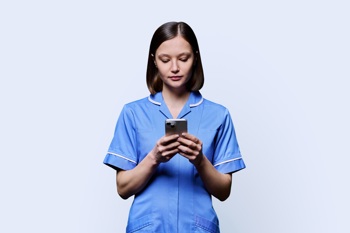
Hardware and Software Problems
Author and Speaker, Calum Chace, said at the World Economic Forum: “Technology has never moved this fast and will never again move this slow.”
The reality is that the speed at which technology has moved on – especially in the last two decades – has meant that the National Health Service has been left behind in some aspects of its operations. This has contributed to issues regarding the workflow of healthcare professionals, and inefficiencies are the first thing the current UK government are seeking to amend as part of their 10-Year Plan for the NHS.
Health Service Journal reported in 2020 that most NHS computers were still running on Windows 7, which came out in 2009 and was replaced by Windows 10 in 2015. This was reiterated in 2023 by the British Medical Journal, who pointed out that the Conservative government’s plans to digitise within the NHS were being hampered by a “lack of basic functioning IT equipment” as well as issues with staff training and a shortage of specialists.
At roughly the same time, the Health and Social Care Committee reported that the NHS did indeed have a large amount of outdated computer hardware, as well as the known outdated operating systems that were incompatible with modern healthcare solutions. Testimony was received from NHS staff whose complaints covered the excessive time for a machine to start up (3-5 minutes) and the frustration at machines or programs freezing during tasks – some critical. There were also frustrations about computers being shared between too many staff members, leading to bottlenecks as well as complications for shift changes.
Benefits of Smart Devices
Tablets and smartphones solve specific clinical problems in and around the NHS:
- Bedside access: Using smart devices, clinicians can update patient records during rounds instead of returning to these shared, fixed terminals.
- Mobility: Care workers and community nurses can use laptops, tablets and phones away from an office setting and still perform the required administration.
- Speed: Modern tablets start up in under 10 seconds typically. Apps load near-instantly compared to software on PCs, with older PCs taking much longer and new ones requiring multiple login screens as part of the two-factor authentication security protocols. A lot of these security measures use apps on smart devices, and the sync between apps on the same device is typically near instantaneous.
- Smart Notes: New Ambient Voice Technology is enhancing transcription, with The Access Group’s Rio Smart Notes leading the way in offering an app that can detect multiple speakers, transcribe the conversation, and summarise the key points to meet the needs of the electronic patient records for an easy upload to a patient’s file.
- Integration: Bluetooth and Near Field Communication (NFC) technology means that devices can connect directly to diagnostic equipment. Clinicians can attach media files to patient records immediately, adding valuable context and detail to notes.
- Prescribing: E-prescribing apps on tablets reduce medication errors, and the goal is to put as many repeat prescriptions through Electronic Repeat Dispensing (eRD) so as to maximise a pharmacist’s work time.
Smart Device Security
The NHS ensures smart device security by mandating what specifications partner solutions need to build into their software, to ensure data protection via trusted encryption methods.
Password entry can be time-consuming, for all it is safe. Biometric authentication has become far more popular, with users providing a fingerprint or facial recognition to gain access to a device. NHS Digital also offers CIS2 authentication; a small security key that acts as a double confirmation of a trusted user activating a device. This can be connected via USB or detected by NFC.
Devices are also required to support remote wiping of data, should they be lost or stolen. This helps further protect both patients and staff from illegal access to protected information and prevents elements like identity theft.

NHS digital costs
The cost to the NHS for smart devices depends on the devices being pursued. Laptops will typically cost more than smartphones and tablets, for example. There’s also the element regarding VAT reclamation or exemption, given the importance of public health in the UK.
Ignoring that, devices typically cost anywhere between £100 and £1000. Research is highly recommended too, as minimal maintenance and longer life cycles helps make costs more absorbable over time. Paying £800 for a laptop that will last five years equates to £160 per year of operational life. Paying £500 for a laptop that will last only two years equates to £250 per year and is less financially responsible.
That being said, desktop PCs shouldn’t be ignored. They may lack mobility, but they are the go-to for desk work and typically offer a good lifespan of five or more years, given they are mains powered and thus negate battery life issues. They can require some maintenance, and minor hardware upgrades for things like RAM (the active memory to run software), but otherwise PCs are dependable.
A big part of the digital costs for the NHS is about culture and education. Teach staff how to use devices and computers properly. Teach them good habits about protecting the technology through regular updates, shutting down after usage, and charging devices when low rather than leaving them permanently plugged in.
Digital innovation NHS
Whilst computers are a great tool for work and social activities, they can be expensive and should be considered carefully against more handheld alternatives like laptops, tablets, and smartphones.
A GP, for example, will of course need a desktop computer based on their regular office hours and appointment styles, but a ward nurse or a care worker won’t be desk-based. They will need something more mobile.
We went to the moon with less computing power than what is in modern smartphones. Technology is rapidly evolving, but this is a good thing. We are incredibly lucky to be in this technological age where more and more exciting and innovative solutions are available – both hardware and software. Variety is a good thing, and health and care providers are right to explore the full range of options available to help deliver the best care possible in a way that gets the most out of the staff using these tools.

 AU & NZ
AU & NZ
 SG
SG
 MY
MY
 US
US
 IE
IE
